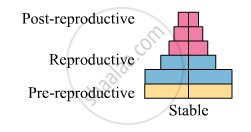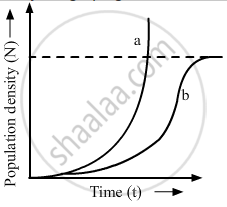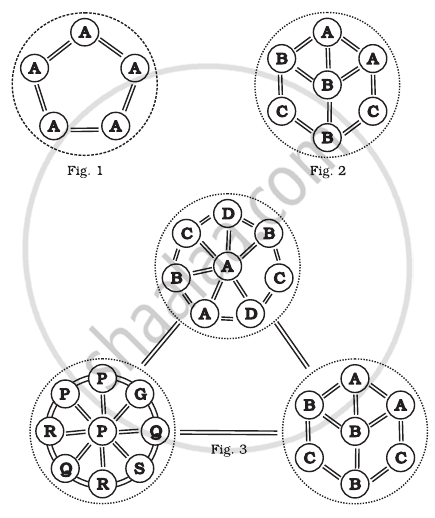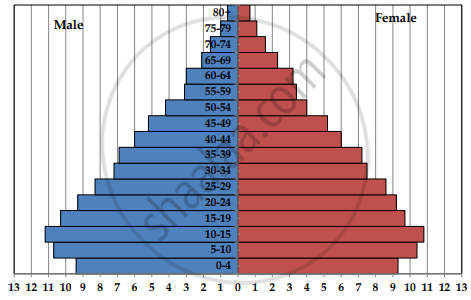Advertisements
Advertisements
प्रश्न
Construct an age pyramid which reflects a stable growth status of human population.
उत्तर
The age pyramid that reflects a stable growth status of human population can be represented as follows:

APPEARS IN
संबंधित प्रश्न
Study the graph given below and answer the questions that follow :

(i) Write the status of food and space in the curves (a) and (b).
(ii) In the absence of predators, which one of the two curves would appropriately depict the prey population?
(iii) Time has been shown on X-axis and there is a parallel dotted line above it. Give the significance of this dotted line
Represent diagrammatically three kinds of age-pyramids for human populations.
What is an age-pyramid?
What is reproductive fitness? Explain it with the help of an example.
Answer the following question.
"The size of a population for any species is not a static parameter." Justify the statement with specific reference to fluctuations in the population density of a region in a given period of time.
Comment on the following figures: 1, 2 and 3:
A, B, C. D, G, P, Q, R, S are species

An individual and a population has certain characteristics. Name these attributes with definitions.
Given below is the Age Pyramid of the population in one of the states in India as per 2011 census. It depicts the male population on the left-hand side, female population on the right-hand side, newborns towards the base and gradually increasing age groups as we move from base to the top, with the oldest population at the top. Study this pyramid and comment upon the appropriateness of the Assertion and the Reason.

Percentage to the total population
Assertion: It is a stable population.
Reason: The pre-reproductive and reproductive individuals are almost in equal numbers and the post-reproductive individuals are relatively fewer.
Important attributes belonging to a population but not to an individual are:
- Birth rate and death rate
- Male and female
- Birth and death
- Sex-ratio
Select the correct option from the given options:
With the help of neatly labelled diagrams, explain the different types of age pyramids of human population.
